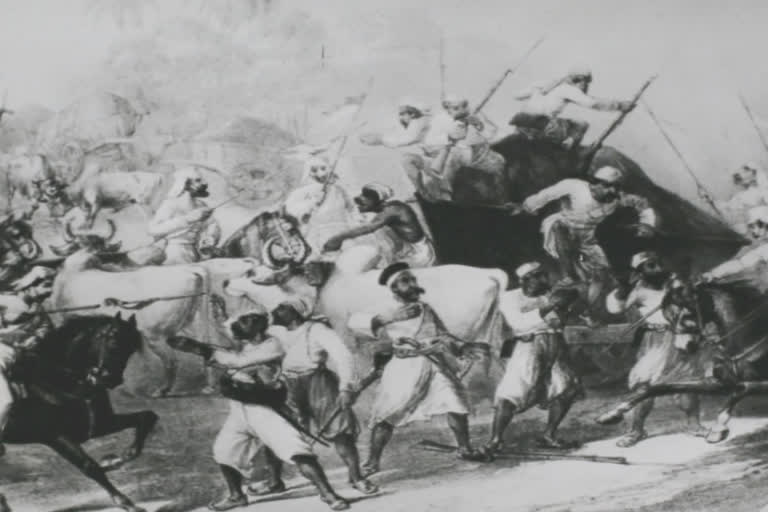Hyderabad: What would anyone expect from a teenage girl these days? Attending school, posting pics on Instagram, asking parents to buy gifts, playing video games but two teenage girls- Santi Ghose (15) and Suniti Chowdhury (14) picked up arms to fight against the British Empire in 1931.
In 1931, civil disobedience movement was at its peak. On December 14th 1931, the two teenage girls shot and killed Charles Geoffrey Buckland Stevens in Comilla in East Bengal. Charles Geoffrey was a District Magistrate of Tippera district. He would stop at nothing to destroy the Satyagraha. He threw all the leaders into prison and harassed every non-violent Indian who raised a voice.
Santi and Suniti were given the job to assassinate the Magistrate .
Santi Ghose was born on 22 November 1916 in Calcutta in British India. She was the founding member of the Chhatri Sangha, a revolutionary organization for women. She served as its general secretary. Ghosh was inspired by Profulla Nandini Brahma, a student at Faizunnesa Girls' School in Comilla, and then joined the Jugantar Party, which was a militant revolutionary organization. She was trained in self-defence.
Suniti Chowdhury was born on 22 May 1917 in Comilla. She was influenced by the revolutionary activities of Ullaskar Dutta, who also lived in Comilla. She was recruited to the Jugantar Party by Profulla Nandini Brahma. During this time, she was known by another name ‘Meera Devi’.
She was selected as the ‘custodian of firearms’ and was in charge of training female members (of the Chhatri Sangha) in lathi, sword and dagger play.
Both learned to shoot to kill Charles Geoffrey. The key challenge was not to shoot targets but to manage the back kick of the revolver. Suniti’s index finger did not reach the trigger properly, but she was not ready to give up.
She used her long middle finger to fire her lethal shots from a small revolver of Belgian make.
At 10 am on 14 December 1931, a carriage stopped before the District Magistrate’s bungalow. The two teenagers descended from it, the shots fired and the notorious magistrate’s last sight was the two girls. They were captured and sent to jail.
Santi was kept in second class jail with the other revolutionaries, while the younger Suniti was pushed to the third class, with the thieves and pickpockets. This also meant violating human rights with deplorable food to bad clothing. Suniti didn’t seem to mind either. She went on with her daily jail chores, regularly hearing about the police atrocities her old parents faced, how her elder brother was arrested, the news of her younger brother becoming a hawker in the streets of Calcutta. These news failed to break her calm resolve.
Their smiles faltered only when the verdict was out. On February 1932, the audience saw a different side of them, two depressed faces over the sheer disappointment. It was lifetime imprisonment, which meant they missed their window of martyrdom.
They were released in 1939, after having served seven years of their sentence, because of the amnesty negotiations between Gandhiji and the British Indian government.
Suniti resumed her studies and took the M.B.B.S. degree. In 1947, she married Pradyot Kumar Ghose. Meanwhile, Santi Ghose attended the Bengali Women's College and participated in India's Communist movement. She later joined the Indian National Congress. In 1942, Ghose married Professor Chittaranjan Das. She served on the West Bengal Legislative Council from 1952–62 and 1967–68. She also served in the West Bengal Legislative Assembly from 1962–64. Ghose wrote and published a book entitled Arun Bahni.
Inspired by Santi Ghose and Suniti Chowdhury, Pritilata Waddedar, a Chittagong school teacher became the first woman martyr when she led fifteen men in a raid on the Chittagong Club. In her last testament she wrote: ‘If sisters can stand side by side with the brothers in a Satyagraha movement, why are they not so entitled in a revolutionary movement?’
By 1933, about 40 women revolutionaries were in prison and by 1934 the civil disobedience movement was over.
Also Read: Quit India Movement: A testimony of India's freedom struggle
